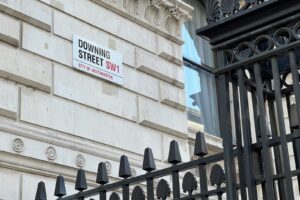The Enterprise Investment Scheme (EIS) is an often overlooked tax wrapper within the tax planning toolbox. Usually the last item on the agenda, behind other more favoured tax-efficient options such as pension contributions or venture capital trusts.
Designed to encourage investment in small, high-risk trading companies, EIS offers a host of benefits for investors who understand the risks involved. In this article, we look at 3 scenarios and how EIS can be a valuable tool for financial advisers in uncovering opportunities to add value for their clients.
Understanding the Enterprise Investment Scheme (EIS):
EIS, established by the UK government in 1994, aims to boost economic growth by incentivizing private investment into early-stage companies. By offering tax relief and other benefits, EIS encourages investors to support small and growing businesses.
How can EIS ‘unlock’ capital within your client book?
Due to the attractive income, CGT and IHT reliefs available when investing into an EIS there may be situations where using an EIS can open up new opportunities and areas of planning that may be ‘locked’ behind tax bills.
- Company shares /stock remuneration
More and more high performing employees are being renumerated with attractive share and RSU (restricted share units) incentives. If your clients work at a large tech company this may be the situation.
The value of these shares can be significant. It can be high risk to have a large percentage of total wealth in the same company that your client works for. There is an argument to sell down these shares and reinvest into a tax efficient, well diversified portfolio.
However, there are two potential taxable events with RSU’s. Firstly the vesting date will increase your taxable income for the year and the value will be taxed at your marginal tax rate.
Secondly, If your client holds shares post their vesting date and then they increase in value,they will incur CGT on sale.
Upon sell down of the shares, any gain can be invested into an EIS deferring the potential CGT due and potentially reclaiming income tax (especially if the vesting period was this / last tax year there may be a large income tax bill).
The original share value can then be invested and managed on platform at a suitable risk level.
- Clients with overexposed property portfolios
Advisers often run into clients who have invested heavily in property over the years. With increased taxation and interest rates, being a landlord is becoming less attractive than before. (not to mention potentially over-exposure to the property market). The client is unwilling to sell their property portfolio as they are concerned about the tax implications and like the income that their property can give them.
By selling the property and investing the gain made into an EIS the client can defer their capital gains tax due on the property. This allows the adviser to place the capital into a well managed, diversified portfolio which can provide an income.
The CGT can be continually deferred and the EIS investment will be able to reclaim some of the income tax that has been generated via the rental income.
Problem: Client has a highly concentrated, poor performing property portfolio.
Solution: Divest a portion of the property assets into a diversified portfolio. Utilising EIS to defer the CGT due.
- Mismanaged share portfolio
You may engage with clients who have been self investing into the markets for some time but not efficiently, causing tax issues.
These clients may have been self investing but not utilising the most optimal tax wrappers (or mismanaged by a DFM) perhaps these are sat in a general investment account rather than an ISA. Due to self investing, this portfolio may not be risk aligned or exposed to single stocks but has performed well over the years. The client may like the idea of reducing some risk but is concerned about any potential tax considerations.
By selling down the share portfolio and placing the gain incurring into an EIS the client is able to defer CGT. The remaining capital can be invested tax efficiently into an ISA in a well diversified portfolio aligned with the clients new risk appetite.
There are many other situations whereby EIS can help you unlock client opportunities. If you would like to find out more please contact the team at OnePlanetCapital. You can find more information about OneplanetCapital and their upcoming March EIS close here.
OnePlanetCapital is an early-stage EIS VC focused on businesses that impact climate change. The OnePlanetCapital team is different from most venture capital firms in that it is a hybrid of experienced entrepreneurs who have built significant businesses backed up with an advisory panel of environmental expertise.
Don’t invest unless you’re prepared to lose all the money you invest. This is a high-risk investment and you are unlikely to be protected if something goes wrong. Take 2 mins to learn more (https://www.oneplanet.capital/risk-warning)














